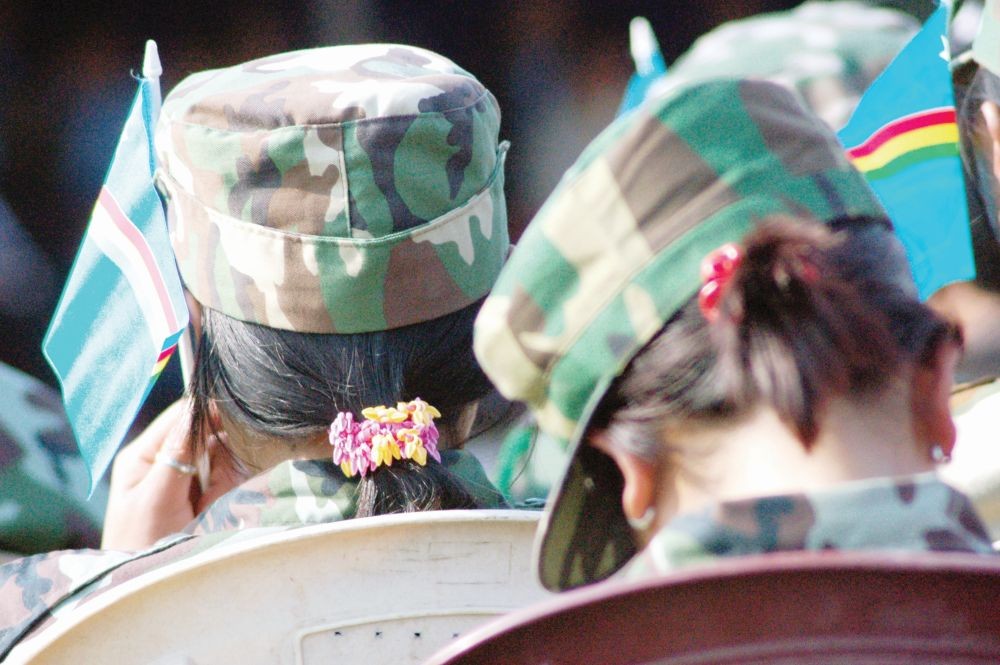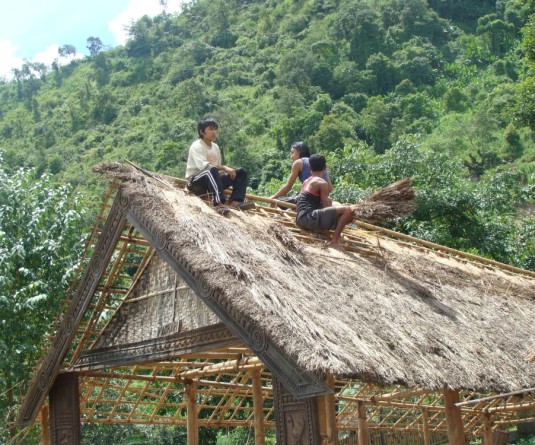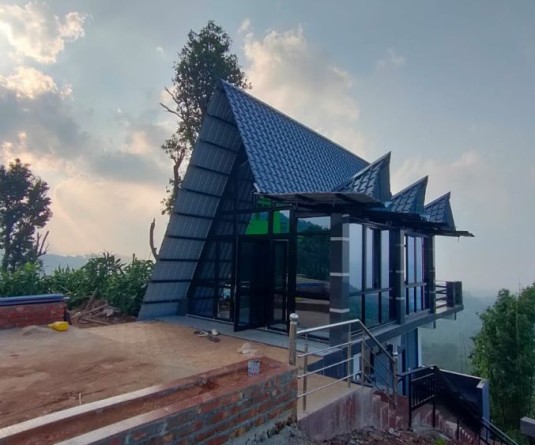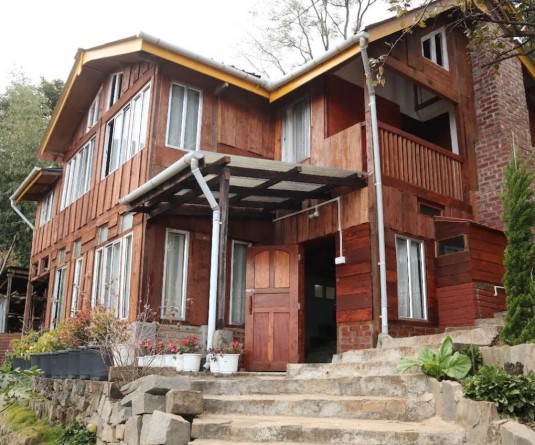File Photo of women cadres of the Naga army

Thannganing Hungyo
Dimapur | July 6
JULY 31, 2007. The day the ceasefire between New Delhi and the National Socialist Council of Nagalim (Isak-Muivah) expires. The day the pact between both sides is branded with 10 years of existence. The question – How much longer?
From ‘mainland’ India, some who have been following the events of the peace process make their observations and deduce the shortfalls in the course of dialogue.
Prominent and senior journalist, Bharat Bhushan, has been keenly trailing the developments. The Centre has not shown ‘political imagination’ in resolving the issue and, analogously, the Nagas have to set aside their ritualistic ways, he says.
“The Government of India has become complacent. When you are not losing anything, you do not know what you stand to gain.”
Equally, he thinks NSCN cadres have become accustomed to the negotiating period. “Ceasefire has become a state of being. It’s a very difficult situation.” His advice to the Naga negotiators is that old or initial positions do not help; advantages and disadvantages have to be scoured.
“The Constitution of India is extremely flexible.” That flexibility, according to Bhushan, depends on political will. By the same token, he suggests, the Nagas could have a separate constitution within the constitution by incorporating their proposals in a separate schedule. “I personally think both sides should show some flexibility.”
Bhushan, who has heard Oscar Fernandes, the Centre’s key man for the negotiations, play ‘We Shall Overcome’ on his harmonica on quite a few occasions, and also in tune with Muivah’s love of singing, and the guitar, is of the view that a “close relationship” between the two entities is possible. “If nothing happens this time, even many Indians will be disappointed.”
Kumar Sanjay Singh, a faculty of Delhi University, feels there has been a “complete lack of movement” on the part of the Centre. “It is unfortunate that the government has not made use of the negotiating period.” If things take a turn similar to the ‘60s which saw the breakdown of ceasefire, “it would be quite sad.”
On the part of the Nagas, he says, not adequate people to people contact was made with others in the country, especially with rights group who “would understand the pain” and those who have undergone “similar but not the same” ordeals.
Deepak Dewan, executive editor of the North East Sun magazine, says this is a time when both parties to the talks are using pressure tactics “all in the name of negotiations.” The talks are poised at a stratum where the Nagas should not talk ‘sovereignty’ and India should not impose her constitution, he supplements.
News writers should not go by “wild guesses”, he advises, and brings into focus the need for quoting relevant sources since the issue is “very sensitive”.
Director of the Centre for Development and Peace Studies located at Guwahati, Wasbir Hussein, reiterates what he has been continuously advocating – transparency in negotiations. Both the Centre and the NSCN (I-M) have to reveal outcomes after every round of talks, according to him. In today’s new-world-order, the Nagas engaged in the talks have to seek a diplomatic solution, he says, and adds that the road ahead is “not going to be simple.”
He questions if the NSCN (I-M) is the only representative of the Naga people. “If not, there is a problem.” Unless the Naga people sort out differences among themselves, it would be too naïve to say that a solution is at hand, he ponders.
Thus far, while the government of India has shown its resolve to keep the ceasefire at status quo, it has however failed to provide any credible indication which demonstrates its will in progressing from ceasefire to solution.
Morung Express News






